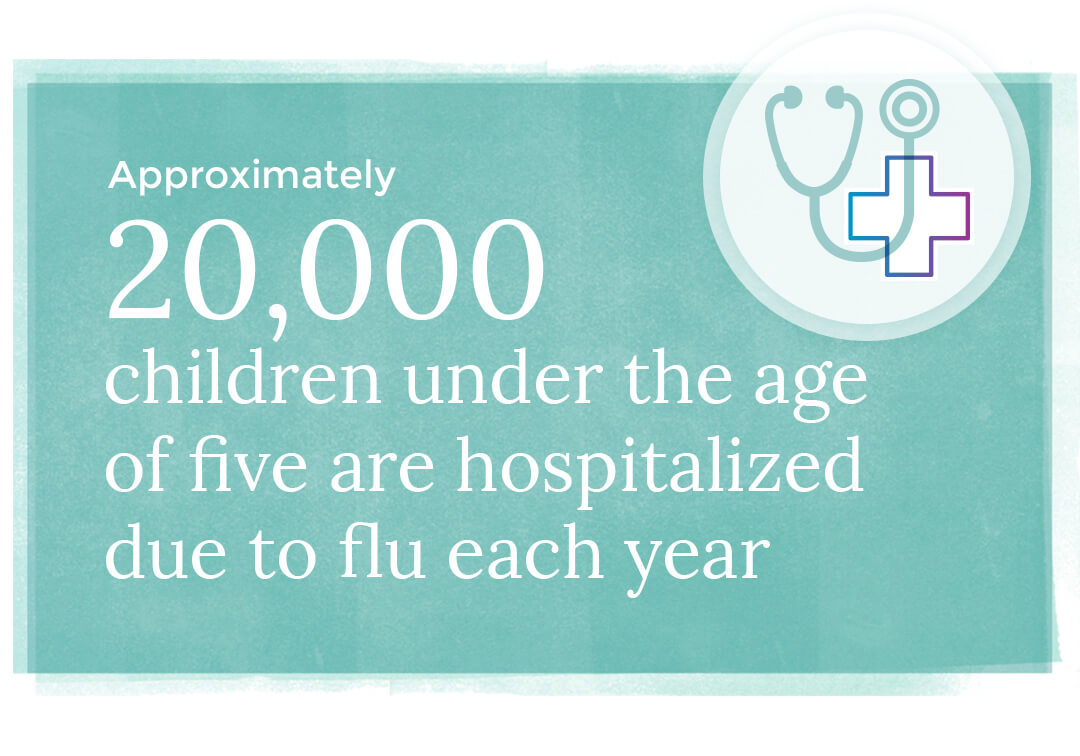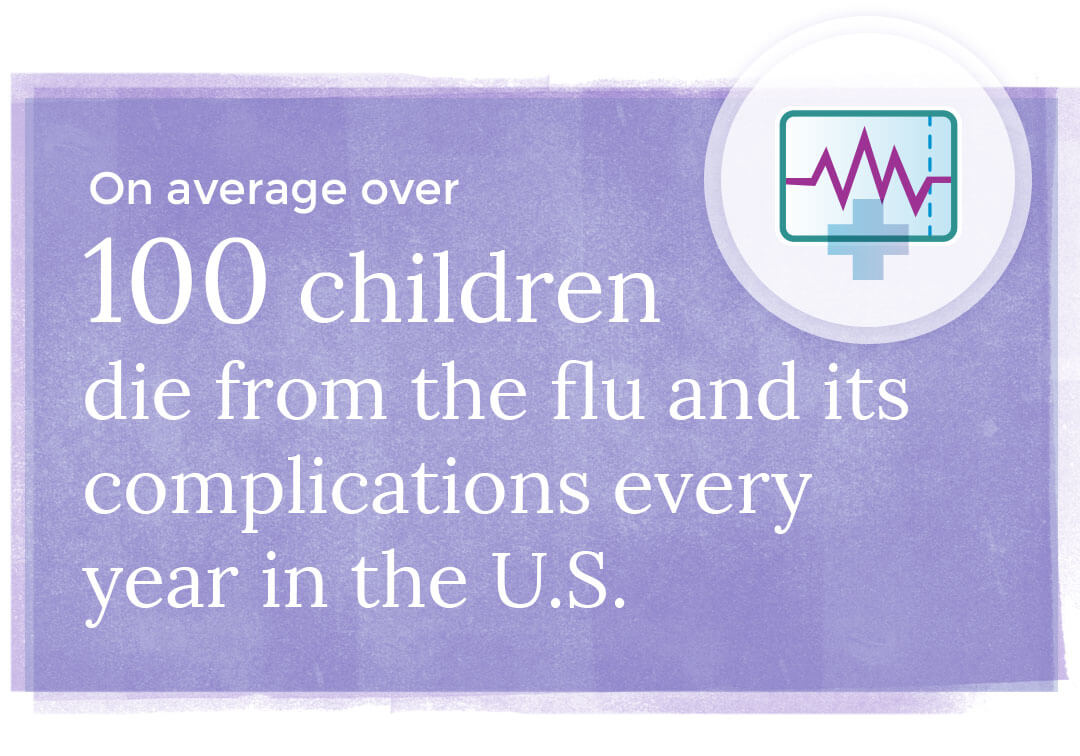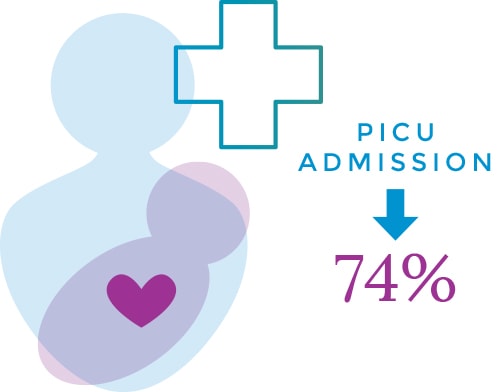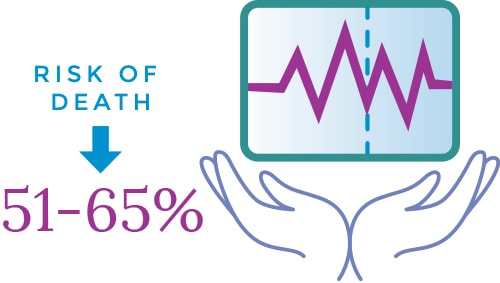Flu & Children

All children 6 months and older need a flu vaccine every year. The flu can be serious, and even deadly for children.
Dangers of Flu in Children
Flu severity varies each season, but each year millions of children get sick, thousands are hospitalized and some die from flu. The majority of them are otherwise healthy, but unvaccinated.
HOSPITALIZATION
Since 2010, flu-related hospitalizations in children under 5 have ranged from 7,000 – 26,000 each year in the U.S. Infants and toddlers are hospitalized at rates similar to elderly people, which is a higher rate than people of all other ages.5


DEATH
On average, over 100 children die from the flu and its complications every year in the U.S. To date, over 2,000 children have lost their lives to flu since 2004. About 80% of children who die from flu are not vaccinated and half had no prior medical conditions. Pediatric flu deaths are underreported, so this number could be much larger than 2,000.
Benefits of Flu Vaccination in Children

Flu vaccination reduces risk of flu illnesses.
In seasons when the vaccine viruses are well matched to circulating strains, flu vaccination has been shown to reduce the risk of having to go to the doctor with flu by 40-60 percent.
Flu vaccination reduces the risk of flu-associated hospitalization.
A 2014 study shows that flu vaccination can reduce a child’s risk of admission into a pediatric intensive care unit (PICU) by 74%.


Flu vaccination can save your child’s life.
A 2017 study shows that flu vaccination significantly reduces a child’s risk of dying from influenza. Among healthy children, flu vaccination reduces risk of death from influenza by 65%. Among children with underlying high-risk medical conditions, flu vaccination reduces risk of death from influenza by 51%.
Flu vaccination reduces the spread of flu.
Vaccinating children can decrease spreading the flu to others. Children are often the spreaders of flu to adults and people who may be at high-risk of flu complications and death.

To read the stories of children who have been hospitalized or died from flu, visit our Story Gallery.
Which flu vaccines are recommended for children?
There are two different types of vaccines that are recommended for children depending on their age:

6 months to 17 years of age and older:
Flu shots (also referred to as inactivated influenza vaccine or IIV), are administered as an injection made with inactivated (killed) flu virus and are approved for use in children 6 months and older.

Image source: CDC, Douglas Jordan, M.A., image provider.
2 to 17 years of age and older:
A nasal spray vaccine (also referred to as live attenuated influenza vaccine or LAIV) is approved for use in children age 2 through 17, with the exception of children who have certain underlying medical conditions such as asthmas. Learn more about precautions against the use of nasal spray flu vaccine here.
Visit these other pages to learn more:
Page last reviewed: November 2021.









